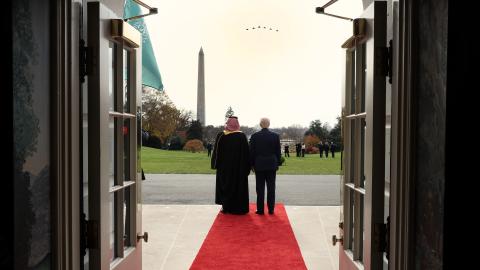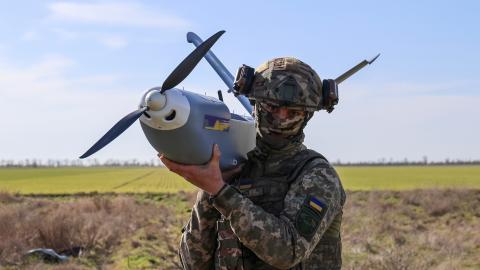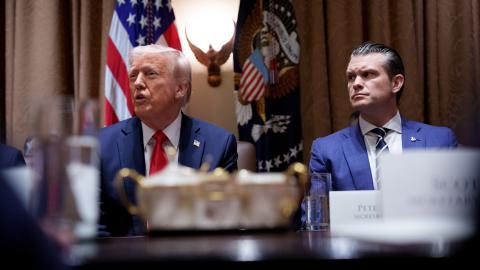The US Defense Intelligence Agency recently released its annual threat assessment report. While these official government documents are often bland and filled with bureaucratic language, this year’s publication stands out — both for its substance and what it reveals about how the new administration views today’s geopolitical challenges. This is the first threat assessment of President Donald Trump’s second term, and it offers an early insight into the administration’s strategic priorities.
A few things jump out right away. This year’s threat assessment is longer than last year’s, and offers a more detailed and nuanced analysis across multiple sections. But two major changes in this year’s report, when compared with the final assessment produced under the Biden administration, are particularly striking.
The most notable difference is the inclusion of a dedicated section on US homeland defense and border security — placed not as an afterthought but as the first item in the report. This marks a sharp departure from last year’s assessment, which focused almost exclusively on global threats and challenges. The placement and tone of the new homeland security section clearly bear Trump’s personal stamp. One of his most effective political narratives has been that US policymakers focus too much on problems abroad, while neglecting the security of Americans at home. This report reflects that view.
The homeland security section places particular emphasis on the national security implications of illegal immigration, transnational organized crime, and the influx of deadly narcotics by drug cartels into small American communities. These are not just political talking points; they represent real and growing threats to the safety and well-being of Americans. But the political savvy of the framing should not be overlooked.
While the average American may not be deeply familiar with issues such as Taiwan’s security or freedom of navigation in the South China Sea, they are certainly familiar with the devastating impact of fentanyl or cartel violence. Including homeland security at the top of the Defense Intelligence Agency’s global threat assessment makes the report more relevant to the American public and highlights Trump’s emphasis on border security as a matter of national defense.
The second striking difference is the prominent section, entitled “Growing Cooperation Among US Competitors and Adversaries,” which comes immediately after the homeland security section. For the first time, a US threat assessment explicitly links and highlights the emerging coordination among America’s adversaries and competitors. The report states: “Building on activities over the past two years, leaders in Beijing, Moscow, Tehran, and Pyongyang will strengthen their nations’ ties in their drive to undermine the influence of the US and its allies.”
This is an important — and overdue — acknowledgment of a multipolar and interconnected world. For years, much of the US foreign policy establishment has resisted the concept of multipolarity, preferring to see the world in unipolar or bipolar terms. This resistance is rooted in Cold War-era thinking, when power was viewed through a US-versus-Soviet lens. But a new generation of American strategists understands that multiple centers of power exist — and are increasingly coordinating with one another to challenge US interests around the globe.
The coming months will be critical for the future of America’s role in the world.
Recognizing the reality of this multipolar environment does not mean conceding that all powers are equal. It simply acknowledges the complexity of today’s geopolitical landscape. The inclusion of this section in the threat assessment is a necessary step toward grappling with the way these regimes are learning from each other, cooperating diplomatically, militarily, and economically, and exploiting US vulnerabilities.
To illustrate the shift, if you took a diplomat from 1980 and one from 1880 and brought them both to 2025, it might be the latter — accustomed to a world of competing empires and power centers — who would better recognize the dynamics at play today.
Recognizing these trends is one thing, acting on them another. Within the new administration, there are competing schools of thought on how to respond. Some believe China is the primary threat and argue that all instruments of US power should be directed toward countering Beijing. Others, often aligned with more isolationist instincts, believe the US should focus exclusively on homeland security and reduce its global footprint. Then there are more traditional Republican voices who argue that the US must be able to address multiple threats simultaneously and maintain its global leadership role.
Though the administration is still filling out its national security team, the contents of the Defense Intelligence Agency report suggest that the latter group is gaining the upper hand, at least for now. That could signal a more balanced approach in future, one that prioritizes US security at home, while maintaining engagement and vigilance abroad.
In the coming months, the Department of Defense is expected to publish a new National Defense Strategy, which should provide additional clarity on how the US plans to counter the threats identified in the Defense Intelligence Agency assessment. Likewise, the National Security Council is likely to release a similar document outlining a more comprehensive, whole-of-government approach to these challenges.
Importantly, all these strategies must be backed by resources. The White House will need to work with Congress to ensure that the budget aligns with these stated priorities. It is one thing to acknowledge that America’s adversaries are coordinating their efforts, but quite another to craft a strategy — and appropriate the funds — to counter them effectively.
Some in the Biden administration may have understood that this emerging coordination by America’s competitors posed a threat, but were reluctant to spotlight it publicly for fear of being forced to act. The Trump administration, by contrast, has put these challenges front and center. But in doing so, it has also raised the stakes. Having declared that homeland defense is national security — and that America’s adversaries are working together — the administration will now be judged on how it responds.
The coming months will be critical, not only for America’s national security and that of its allies, but also for the future of America’s role in the world.
















